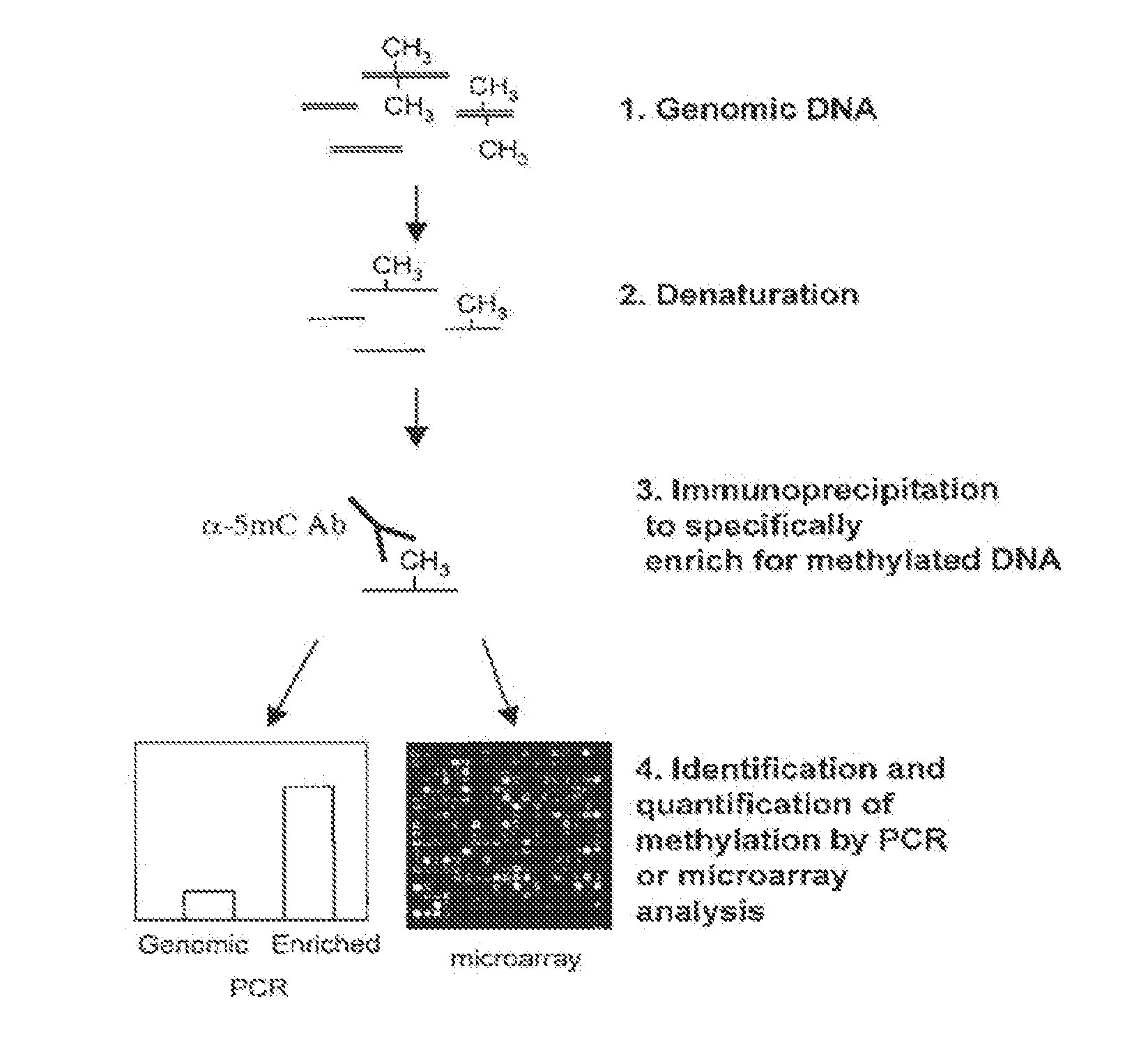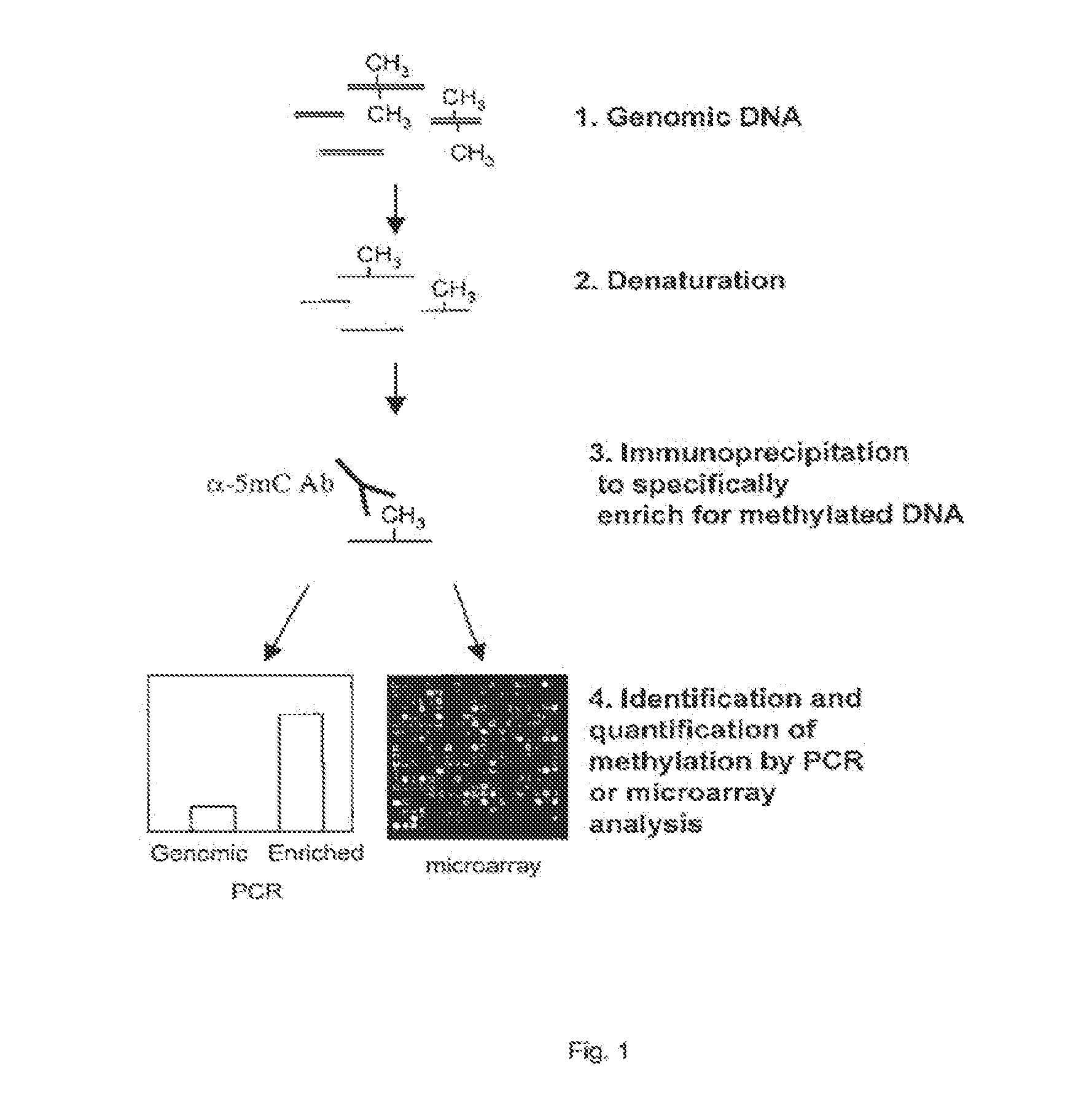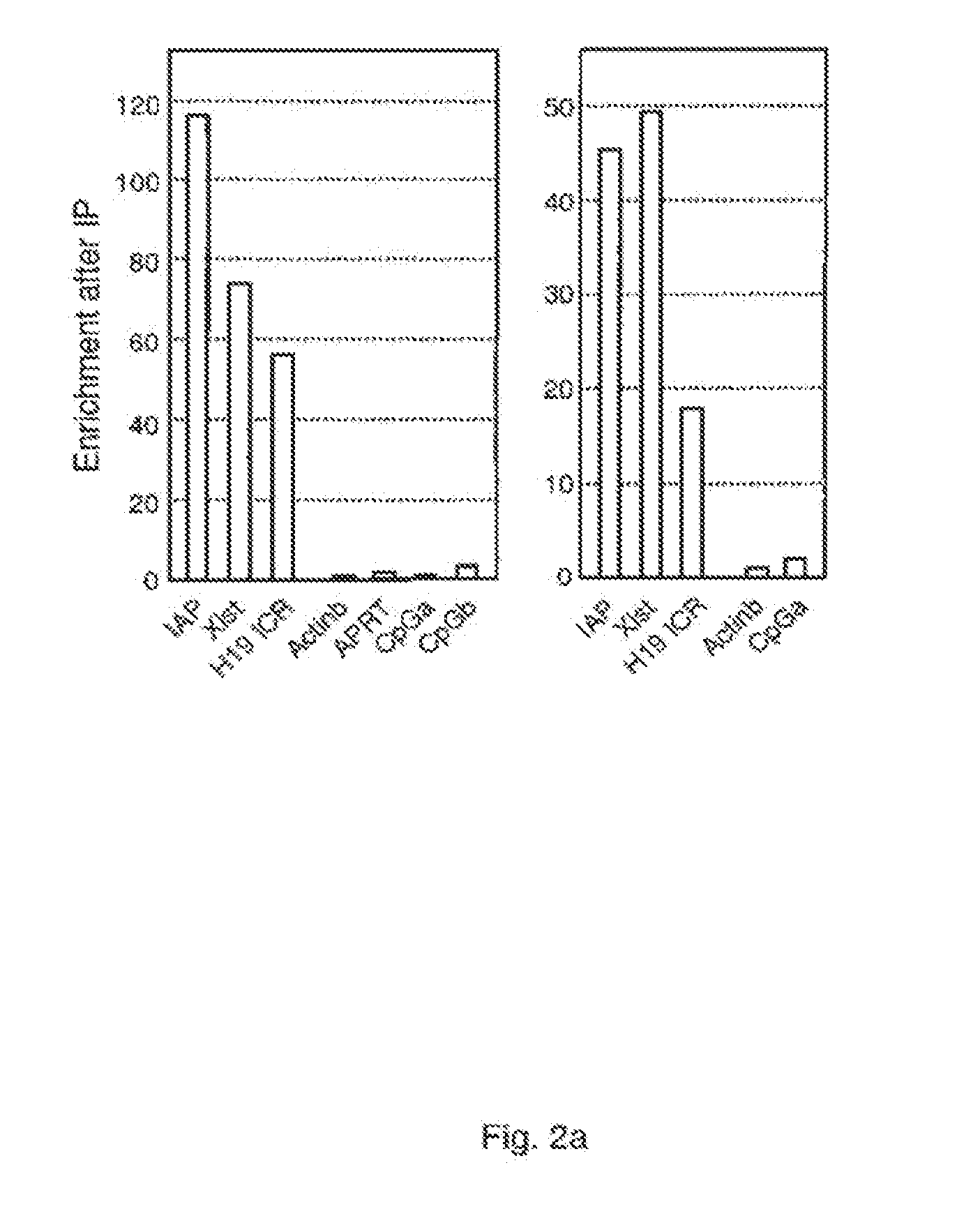Analysis of methylated nucleic acid
a technology of methylated nucleic acids and analysis methods, applied in combinational chemistry, growth factors/regulators, chemical libraries, etc., can solve problems such as large-scale genomic analysis, and achieve the effect of large surface area
- Summary
- Abstract
- Description
- Claims
- Application Information
AI Technical Summary
Benefits of technology
Problems solved by technology
Method used
Image
Examples
example 1
[0097]Male mouse (Mus musculus domesticus) genomic DNA was fragmented by sonication using a Branson digital sonifier and female Mouse (Mus musculus domesticus) genomic DNA was fragmented by digestion with AluI (NEW ENGLAND BIOLABS, USA) using conditions recommended by the manufacturer.
Enrichment
[0098]4 μg AluI-digested or sonicated mouse genomic DNA was diluted in 450 μL TE (10 mM Tris-HCl pH 7.5, 1 mM EDTA) to make a DNA suspension and heated to 95° C. for 10 minutes to denature the DNA.
[0099]51 μL of 10×IP buffer (100 mM Na-Phosphate pH7.0, 1.4M NaCl, 0.5% Triton X-100) and 10 μL of mouse monoclonal antibody against 5-methylcytidine (EUROGENTEC, #MMS-900P-B) were added to the suspension. The suspension was then incubated for two hours at 4° C. with overhead shaking.
[0100]30 μL of Dynabeads M-280 Sheep anti-mouse IgG (DYNAL BIOTECH, #112.01) were pre-washed in PBS-BSA 0.1% (phosphate buffered saline-bovine serum albumin) and added to the suspension. The suspension...
example 2
[0111]Mouse (Mus musculus domesticus) genomic DNA was fragmented by digestion with AluI. 4 μg of the fragmented DNA was subjected to enrichment as described in Example 1.
[0112]The abundance of 4 restriction fragments in the H19 ICR containing various amounts of methylated CpGs was calculated by real time PCR relative to a negative control containing no CpG.
[0113]The result in FIG. 2B shows a positive linear correlation between the enrichment and the amount of methylated CpGs in the restriction fragment.
example 3
[0114]Hybrid mouse (Mus musculus domesticus×Mus spretus) genomic
[0115]DNA was fragmented by sonication.
[0116]4 μg of the fragmented DNA was diluted in 450 μL TE (10 mM Tris-Hcl pH 7.5, 1 mM EDTA) to make a DNA suspension and heated to 95° C. for 10 minutes to denature the DNA.
[0117]The suspension was split into two samples (IN and IP). Sample IP was subjected to enrichment as described in Example 1. Sample IN was not subjected to enrichment.
Detection of Maternal and Paternal Alleles
[0118]Both IN and IP samples were amplified by PCR using primers for the H19 ICR allele which result in a 200 bp PCR product. The H19 ICR allele from Mus spretus contains a polymorphic SacI restriction site that is not present in the Mus musculus domesticus H19 ICR allele. Treatment of the PCR product from the domesticus allele with SacI leaves the 200 bp fragment uncut, whereas treatment of the PCR product from the spretus allele with SacI gives two 100 bp fragments.
[0119]IN and IP PCR products were each...
PUM
| Property | Measurement | Unit |
|---|---|---|
| pH | aaaaa | aaaaa |
| magnetic | aaaaa | aaaaa |
| time | aaaaa | aaaaa |
Abstract
Description
Claims
Application Information
 Login to View More
Login to View More - R&D
- Intellectual Property
- Life Sciences
- Materials
- Tech Scout
- Unparalleled Data Quality
- Higher Quality Content
- 60% Fewer Hallucinations
Browse by: Latest US Patents, China's latest patents, Technical Efficacy Thesaurus, Application Domain, Technology Topic, Popular Technical Reports.
© 2025 PatSnap. All rights reserved.Legal|Privacy policy|Modern Slavery Act Transparency Statement|Sitemap|About US| Contact US: help@patsnap.com



